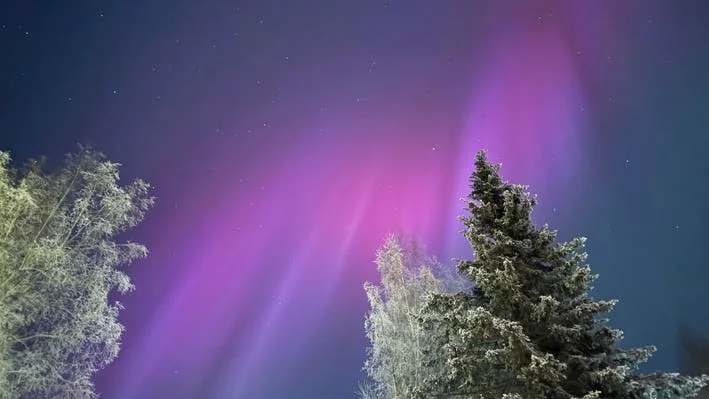
Aurora Alert: Northern Lights May Dance Across Several US States
Get ready to witness a celestial spectacle! The Northern Lights, also known as the Aurora Borealis, might be visible in several U.S. states in the coming days. According to the National Oceanic and Atmospheric Administration (NOAA), heightened geomagnetic activity is creating favorable conditions for this stunning natural phenomenon.
Understanding the Aurora
The aurora borealis is a result of solar activity. When the sun reaches a "solar maximum," a peak in its 11-year cycle, it releases more coronal mass ejections and solar flares. The electrons unleashed from these events then interact with oxygen and nitrogen in Earth's atmosphere, creating the swirling, colorful displays we call the northern lights.
Where to Watch?
Two recent forecasts indicate prime viewing opportunities. According to the NOAA fifteen states in the northern U.S. could be able to see the northern lights Sunday night, while a group of states in the northern U.S. may have the opportunity to see the northern lights Monday.
Viewing conditions could be best in the Alaskan and Canadian areas, a glimpse of the lights may be visible in northeastern Washington, northern Idaho, Montana, North Dakota, northern Minnesota, northern Wisconsin and Upper Michigan. For Sunday night, the aurora forecast could also extend visibility from Alaska, North Dakota, Minnesota, most of Washington, South Dakota, Montana, Wisconsin, Michigan and Maine, and the northern parts of Idaho, Wyoming, Iowa, New York, Vermont and New Hampshire.
The NOAA recommends heading to a north-facing location away from light pollution. The optimal viewing time is typically between 10 p.m. and 2 a.m. local time.
Tips for Capturing the Aurora
Want to photograph this mesmerizing display? Photography experts suggest using a wide-angle lens and a tripod. Adjust your camera settings for low-light conditions, using an aperture of F-stop four or less. For smartphones, enable night mode and disable the flash.
Space Weather and Radio Blackouts
NOAA also noted a slight chance of minor to moderate radio blackouts over the next few days. While large-scale outages are unlikely, high-frequency radio communications could be affected.
The Aurora's Peak?
Following a "solar maximum" late in 2024, space weather events may increase into to 2026. Thus, the chance to observe auroras like these will likely remain high for some time to come.
Will you be trying to catch a glimpse of the aurora borealis? Share your viewing experiences and photos in the comments below!